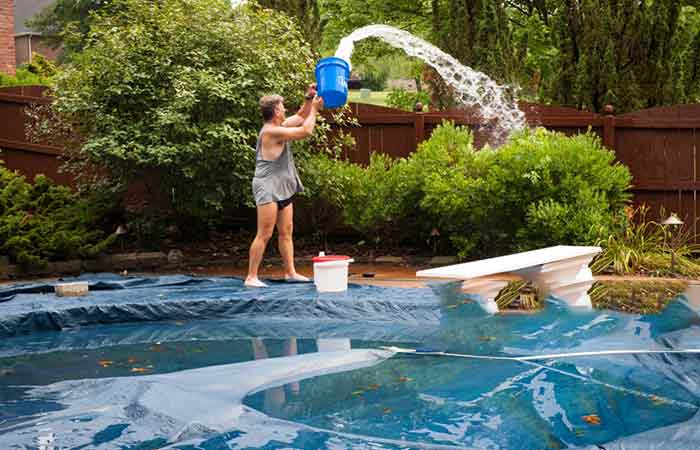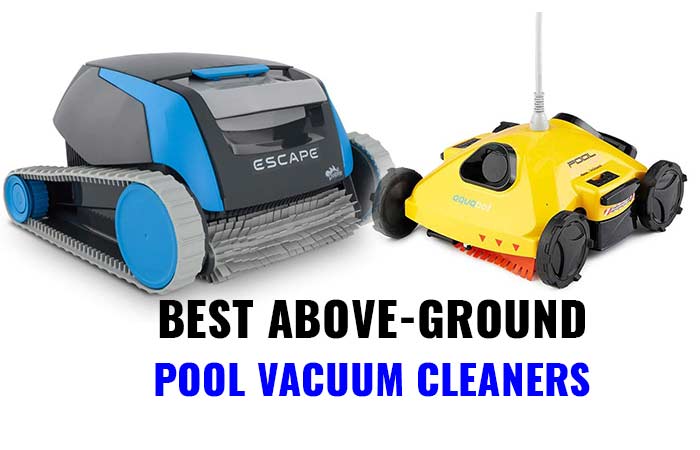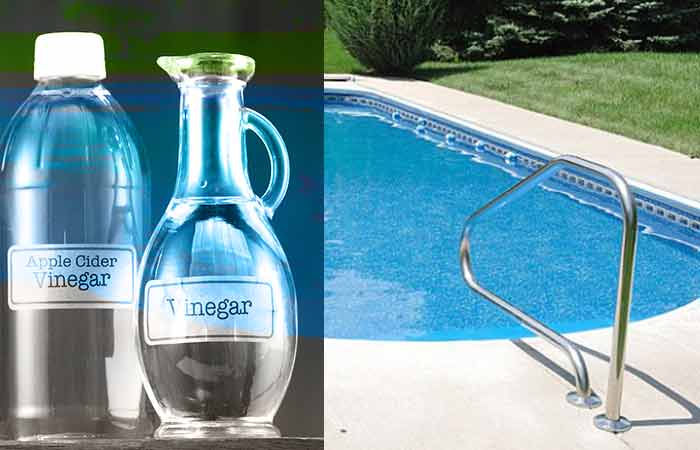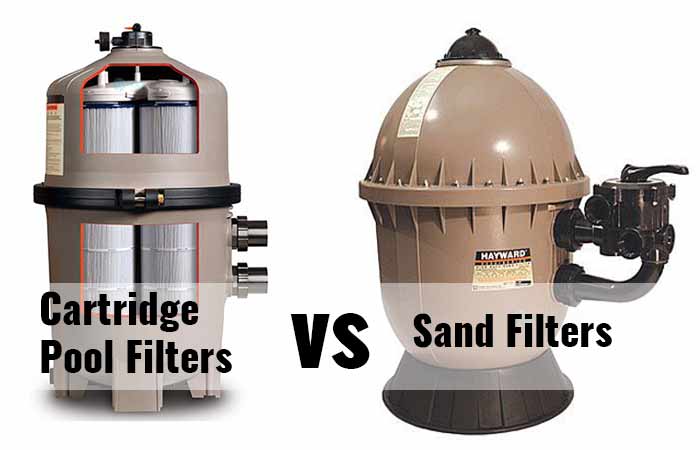How to get Dirt out of Pool without Vacuum
Whether your pool is inground or above the ground, cleaning it is basically the same for either. Both will require a filter pump every once and again and vacuuming if there are other debris you need to get rid of.
If, however, you have neither tool (or just one of them) and want to keep it clean, you can use the methods we discussed below. Depending on the type of dirt in your pool, you may use a leaf rake, tennis balls, pool filter system, brushes and others.
We discuss which methods best apply to which types of dirt and how to use the chosen method for the best results. Keep in mind that you may need to use a combination of methods to get the right results for your pool.
1. Pool Filter System: most Types of Dirt
The most effective method for dealing with dirt and debris in the water is a pump filter system. It can be a sand filter or cartridge filter or other type. It takes care of both large and small particles including the ones invisible to the eye.
You can make the cleaning more effective by loosening up the dirt from the walls using a brush or stirring up the water so that the dirt is captured properly from the water.

2. Cleaning using the Shock Method
The shock method does a great job at cleaning and removing algae and debris from your swimming pool. Basically, it balances the level of free chlorine to kill algae and bacteria in the pool. For this one, you need the following items:
- Calcium hypochlorite pool shock
- A bucket
- Eyewear
- Hand gloves
Follow these steps:
Step#1: In a bucket of water, add a pound of calcium hypochlorite and mix to uniformity.
Step#2: Add to the pool at the areas most affected with algae or bacteria.
Step#3: Allow the pool to run for 12 hours (half a day) for the proper mixing of the shock with the water. The water should turn cloudy in this stage.
Step#4: After 12 hours, add a pool clarifier to remove the cloudiness from the water. You can also simply let the pool run for another full day to clear itself up.
What you’ll be doing is shocking the algae and bacteria by changing the pH levels of the water such that they microorganisms find it unconducive for their survival.
3. Tennis Balls: Oily Dirt
Tennis balls tend to attract oily dirt floating and mixed with the water. This can be actual oil, lotions and other skin care products from swimmers and chemicals such as insect repellants used by swimmers or around the pool.
To use them, simply throw the balls into the pool and let them float around it freely. With time, they’ll attract the oils and chemicals towards them. You can then remove them, gently clean up the balls, dry them up and toss them back into the pool or play tennis with them. You can also throw them away since they’re not that costly.
4. Brushes: Dirt inside Walls and Floor of Pool
Depending on the type of surface in your pool, you can use a brush to scrap it clean with or without water in it. If the pool has a soft vinyl liner, you will use a rubber or nylon brush to keep it clean. If the pool has a concrete floor and walls, a stiff and course brush will do the trick.
For this one, brush the walls with the brush in repeated motions to scrap off the dirt and loosen it. After you’re done, you’ll need to clean it from the water using other methods. If you have a filter pump running and the dirt doesn’t settle on the bottom of the pool, it’ll do the work for you. You may also need to scoop up the dirt from the bottom of the pool with a suitable tool.
As you brush the walls and floor of the pool, also brush the ladders and steps and any other objects in the water.
5. Leaf Rake: Large Non-dissolving Debris
Large debris either sunken to the bottom or floating around the pool will be removed with ease using a leaf rake. For the best results, go for a plastic one that doesn’t scratch the bottom or sides of the pool. Once you have the debris in one corner or other suitable position, remove it with an appropriate tool.
6. Dustpan: Sedentary Dirt
For dirt that settled at the bottom of the pool, a dustpan can do the trick. You will have to dive underwater to push the dirt to the dustpan then slowly rise up with it. If you make quick movements when the dirt is on the dustpan, it’ll simply move back to the water around you.
7. Skimmer Net: Floating Dirt and Debris
The skimmer net is best used on dirty pools which don’t dissolve into the water. These include flower petals, leaves, pieces of wood and others. Such dirt ought to be removed before they rot and disintegrate into smaller pieces that are hard to remove.
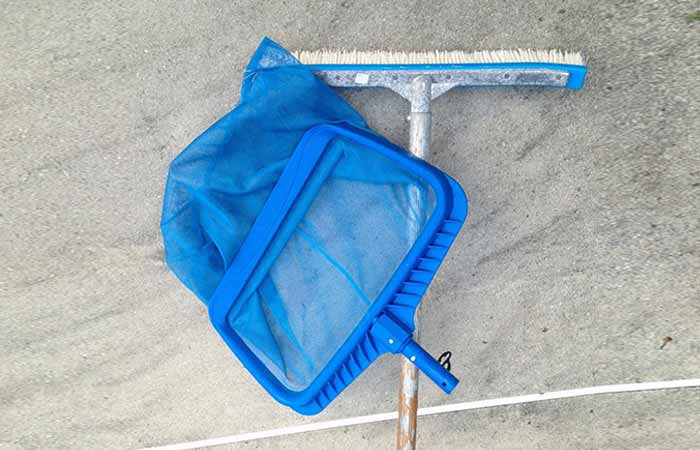
8. Hands
At times, the debris on the floor should be removed by hand since, unlike a dustpan, the hands won’t let go of the dirt back into the water. The same holds true for floating dirt such as leaves and flower petals.
Any one or a combination of these methods will help solve your pool dirt issues. For the best results, you’ll need to combine them. This way, you can be sure you’ve dealt with all types of dirt in the water.
When cleaning up the pool with most of these methods (apart from the filter pump one), aim to keep the water calm by, for example, turning off the inlet and outlets. This way, no water currents will accidentally cause waves to spread out the dirt if you’ve collected it to one side of the pool.

How to prevent swimming pools from getting dirty
The surest way to keep a pool from getting dirty is to cover it. Each time you need to swim or relax in the pool, sweep the top of the cover before removing it to prevent the collected dirt from getting to the water.
Even then, this method can’t completely keep dirt from entering the water and frequent cleaning is needed. You can always count on a filter pump to keep the pool clean. Combine it with the other methods discussed here for a sparkling clean swimming pool.
Further Reading

